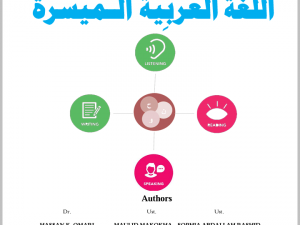- Description
- Curriculum
FINANCIAL ACCOUNTING
GENERAL OBJECTIVE
This paper is intended to equip the candidate with knowledge, skills and attitudes that will enable
him/her to prepare financial statements for different entities
LEARNING OUTCOMES
A candidate who passes this paper should be able to:
• Prepare books of original entry and basic ledger accounts under double entry system
• Prepare basic financial statements of sole traders. partnerships, companies and manufacturing
entities and not for profit organisations
• Comply with the regulatory framework in the accounting field
• Account for assets and liabilities
• Analyse financial statements by use of ratios and statement of cash flows
CONTENT
1. Introduction to Accounting
– The nature and purpose of accounting
– Objectives of accounting
– Users of accounting information and their respective needs
– The accounting equation
– Reguratory framework of accounting (regulatory bodies such as ICPAK, IFAC, IASB,
IPSAB
– Accounting standards (IAS/IFRS), (Importance and limitations)
– Professional ethics
– Accounting concepts/principles
– Qualities of useful accounting information
2 Recording transactions
– Source documents (quotations_ purchases order, statement of account. remittance advice,
receipts, petty cash vouchers_ sales arid purchase invoices, credit notes and debit notes, bank
statements)
– Books of original entry: sales journal, purchases journal, returns inward, returns outward
journal, cashbook, petty cashbook and general journal
– Double entry and the ledger; general ledger, sales ledger, purchases ledger
– The trial balance
– Computerised accounting systems- Role of computers, application and accounting softwares
in the accounting process, benefits and challenges of operating computerised accounting
systems
3. Accounting for assets and liabilities
3.1 Assets
– Property, plant and equipment — recognition, capital and revenue expenditure, measurement
(depreciation and revaluation), disposal and disclosures — property, plant and equipment
schedule
– Intangible assets — recognition, measurement (amortisation, impairment and revaluation),
disposals and disclosures
– Inventory – recognition, measurement and valuation using specific. cost method (FIFO and
weighted average cost)
– Trade receivables – bad debts and allowance for doubtful debts and receivables control
accounts
– Accrued income and prepaid expenses
– Cash at bank — cashbook and bank reconciliation statement
– Cash in hand – cash book and petty cash book
3.2 Liabilities
– Bank overdraft – cash book and bank reconciliation
– Trade payables – payables control accounts
– Loans – accounting treatment of repayment of principal and interest
– Prepaid income and accrued expenses
4. Correction of errors and suspense account
5. Financial statements of a sole trader
– Income statement
– Statement of financial position
– Preparing financial statements under incomplete information
6. Financial statements of a partnership
– Partnership agreement
– Distinction between current and fixed capital
– Income statement
– Statement of financial position
– Changes in partnership – Admission of a new partner, retirement and change in profit sharing
ratio
7. Financial statements of a company
– Types of share capital – ordinary shares and preference shares
– Issue of shares (exclude issue by instalment and forfeiture)
– Types of reserves share premium, revaluation reserve, general reserves and retained profits
– Income tax -Accounting treatment and presentation (exclude computation)
– Financial statements – Income statement and statement of financial position
– Published financial statements (describe a complete set of published financial statements but
not preparation)
8. Financial statements of a manufacturing entity
– Features of a manufacturing entity
– Classification and apportioning costs between manufacturing and selling and administration
– Financial statements – manufacturing account, income statement and statement of financial
position
9. Financial statements of a not-for-profit organisation
– Features
– Types of funds and their accounting treatment
– Income and expenditure account
– Statement of financial position
10. Analysing financial statements
– Statement of cash flows (categories of cash, methods of preparing statement of cash flows
and the importance)
– Financial ratios — definition, categories, analysis and interpretation, application and
limitations
11. Introduction to public sector Accounting
– Features of public sector entities (as compared to private sector)
– Structure of the public sector (National and county governments: state corporations and other
agencies)
– Regulatory structures and oversight [IPSASB, PSASB (establishment, mandate and
functions), Director of Accounting Services, National Treasury, Parliamentary Committees.
Accounting Officers at national and county levels]
– Objectives of public sector financial statements
– Objectives of IFSAS
– Accounting techniques in public sector (budgeting, cash, accrual: commitment and fund)
(Preparation of financial statements should be excluded)
12. Emerging issues and trends
About
The history of the Buruuj Training Institute (BTI) dates back to July 2006, when its predecessor, the TJ Computer College, commenced training in Sotik Town, Bomet County. In 2008, TJ computer college relocated to Nairobi.
Contacts
-
+254 020 8000600
-
admissions@bti.ac.ke
-
info@bti.ac.ke
-
Helena Road, Ongata Rongai - Kajiado
-
Po Box 103384 – 00101, Nairobi
Subscribe
Copyright © Buruuj Training Institute. All Rights Reserved.
Design by Crablinks


